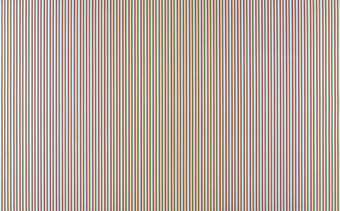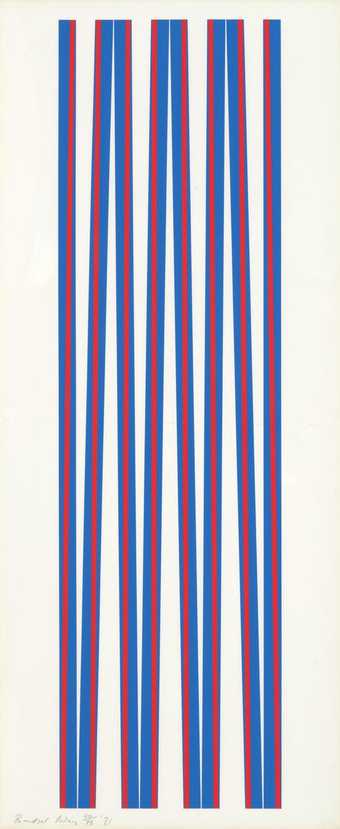
Bridget Riley
Late Morning (1967–8)
Tate
Bridget Riley is one of Britain’s best-known artists. Since the mid-1960s she has been celebrated for her distinctive, optically vibrant paintings which actively engage the viewer’s sensations and perceptions, producing visual experiences that are complex and challenging, subtle and arresting.
Riley’s paintings exist on their own terms. Her subject matter is restricted to a simple vocabulary of colours and abstract shapes. These form her starting point and from them she develops formal progressions, colour relationships and repetitive structures. The effect is to generate sensations of movement, light and space: visual experiences which also have a strong emotional and even visceral resonance.
Bridget Riley
Though her work is abstract, such experiences seem surprisingly familiar. During her childhood, when she lived in Cornwall, she formed an acute responsiveness to natural phenomena. In particular, the effects of light and colour in the landscape made a deep impression. Though her mature work does not proceed from observation, it is nevertheless connected with the experience of nature. Of her paintings, she has commented: ‘the eye can travel over the surface in a way parallel to the way it moves over nature. It should feel caressed and soothed, experience frictions and ruptures, glide and drift…One moment there will be nothing to look at and the next second the canvas seems to refill, to be crowded with visual events.’ This parallel relation between Riley’s art and nature has underpinned the development of her work, colouring the way it forms both an exploration and a celebration of a fundamental human experience: sight.
Riley’s work falls into phases or groups in which it is possible to see certain formal ideas being worked through. At the same time, however, her work has not followed a single, straightforward line of development. Rather, its course resembles a kind of musical progression in which different themes are stated, explored, combined with other ideas, and progressively transformed. The exhibition is therefore arranged in a broadly chronological order, and according to phases or families of related paintings. Within these groups internal connections can be discovered and ideas stated earlier can be seen reappearing in later works.

